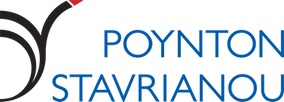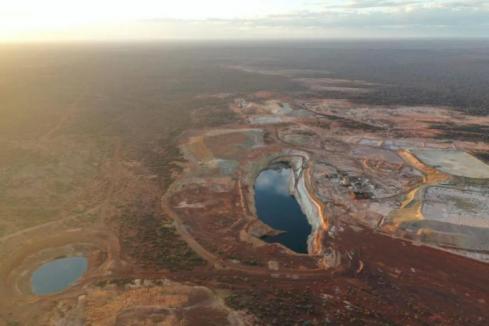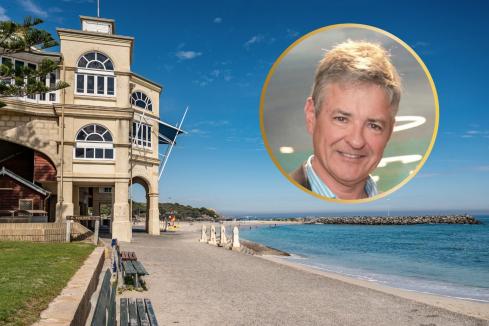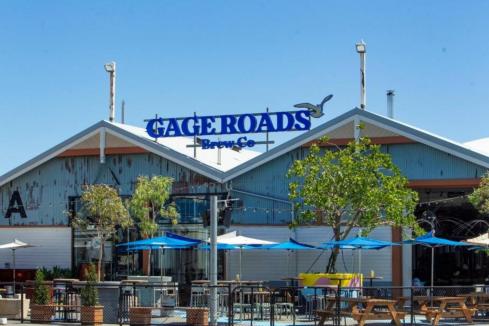Perth-based fund managers beat the market last financial year but are divided on future investment strategies.

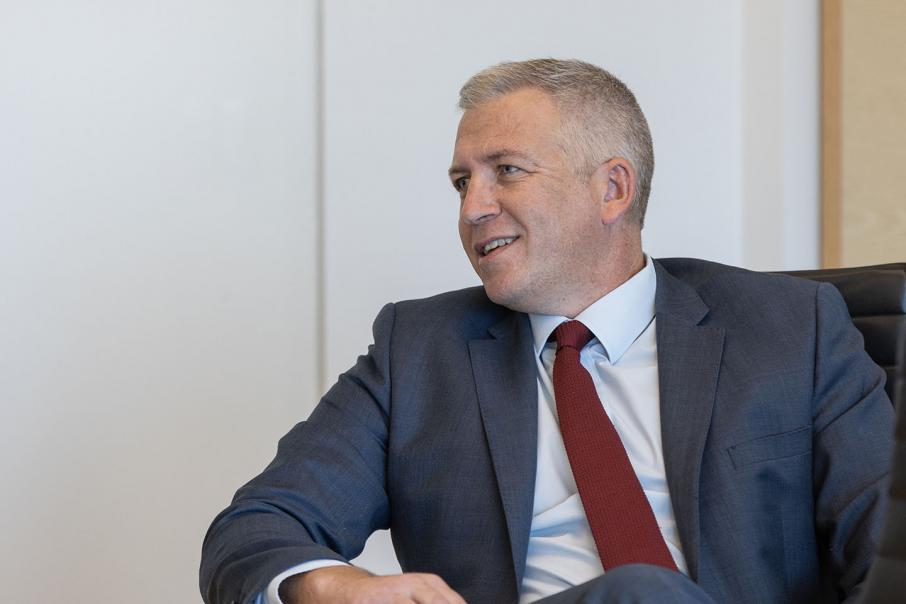
Cottesloe-based fund manager Packer & Co, which invests more than $2 billion on behalf of its clients, has described current market conditions as a “train wreck” in its latest report.
“In our investment careers, we have never seen a man-made train wreck like the world is now experiencing,” it said.
As is the case with most of his peers in the funds management sector, Katana Asset Management’s Romano Sala Tenna is also wary about the market outlook.
“Notwithstanding the challenges we faced in March, by comparison the present time is an order of magnitude more difficult to navigate,” he said.
(click here to view a PDF version of this special report)
Fund managers have needed to deal with extraordinary volatility during the past few months, with the stock market crashing in March before bouncing back strongly.
Precision Funds Management director Tony Kenny believes the market has got ahead of itself.
“The remarkable market recovery, we think, is ahead of fundamentals and when reality sets in we will start to see overstretched valuations come back to more realistic levels,” Mr Kenny told Business News.
Merchant Funds Management director Andrew Chapman shares this concern, but admits it is hard to be sure where the market is heading.
“I’m waiting for a market pullback, but honestly I’m beginning to wonder if it will come soon, given the governments of the world will continue to stimulate their economies and there isn’t much else to invest in these days,” Mr Chapman said.
Dealing with uncertainty is what fund managers are paid to do.
Business News has surveyed Perth’s small funds management community to see how well they dealt with last year’s volatility and how they are setting up for the future.
The survey of investment funds and listed investment companies focused on Australian equities showed all Perth-based managers beat the market, but with wide variations in their absolute returns (see table).
The Katana Australian Equity Fund was among the best performers for the past financial year.
It achieved a return (net of fees) of 9.7 per cent.
To put this in context, the benchmark All Ordinaries Accumulation Index (which reflects both share price movements and dividend payments) was down 7.2 per cent over the same period.
The Katana fund was ranked as the fifth best performer among 138 Australian equity funds surveyed by consulting firm Mercer.
Mr Sala Tenna said this was the second time in three years the fund had been ranked in the top 10.
The positive return for the year reflected a spectacular 31.4 per cent gain in the June quarter.
The investment strategy of the Katana Australian Equity Fund is mirrored in listed investment company Katana Capital, which was established 15 years ago.
Since inception, Katana Capital has returned 8.6 per cent per annum while the All Ords Accumulation Index has gained 6 per cent a year over the same period.
Euroz subsidiary Westoz Funds Management, which manages more than $200 million on behalf of investors, is another group able to boast a long-term track record.
Its two listed investment companies had mixed performances last financial year.
Ozgrowth, which focuses on smaller ASX companies, posted a return of 7 per cent.
Westoz Investment Company, which has a portfolio of small to mid-cap Western Australian companies, did not fare so well.
It posted a return of minus 1.7 per cent, but that’s much better than the 7.2 per cent fall in the stock market overall.
Executive director Dermot Woods said the group was aiming for good risk-adjusted returns over time.
“We’re not trying to shoot the lights out,” he said.
Mr Woods said Westoz was also focused on delivering consistent dividend payments to its shareholders.
“We’ve come through the whole thing unaffected in terms of dividend, which we’re pretty proud of,” he said.
Since inception, the two listed investment companies have paid $230 million in dividends and franking credits.
“We’ve been doing this for 15 years and the numbers are there, simple as that,” Mr Woods said.
Buying opportunities
Katana’s strong performance last financial year reflected the group’s strategy of buying when the market was on its knees.
Reflecting on market volatility, Mr Sala Tenna said the ASX fell by 27 per cent during the GFC, over a period of 10 months.
“During the COVID-19 crisis the same decline occurred in under three weeks, making it the fastest crash on record,” he said.
Mr Sala Tenna said his group had anticipated a rebound in the June quarter, based on four factors: record government stimulus and liquidity, the record bond yield differential, cheap stock valuations, and a stimulatory oil price.
“Valuations had contracted to the point where the risk-return equation was clearly in favour of deploying capital,” he said.
In contrast to his confidence three months ago, Mr Sala Tenna said it was difficult to pick movements over the rest of 2020, with the most likely outcome being a volatile, range-bound market.
“Given the level of fear versus cash on the sidelines, we are likely to see that the moves are rapid and exaggerated as investors adjust to the daily news flow,” he said.
“Accordingly, we have moved to a more neutral footing.”
The group has increased its cash position to more than 25 per cent of the portfolio.
Katana has also reduced its exposure to small cap stocks and illiquid stocks, and taken profits in the technology and healthcare sectors.
In addition, it has selectively added to its holdings of ‘old world’ cyclical stocks, such as the big banks.
In order to spread its risk, the group has moved to having a larger number of small holdings, with its portfolio spread across more than 60 stocks.
Katana’s largest holding at June 30 was Perth-based gold miner Regis Resources.
The only other Perth-based company in its top 10 holdings was Mineral Resources.
Other stocks include Coca Cola Amatil, Aristocrat Leisure, Ingenia Communities, and Macquarie Group.
While Mr Sala Tenna said he was cautious about the short-term outlook, he was more positive about a longer-term recovery.
The three main factors were confidence that central banks would support the global economy, the large amount of cash that needed to be invested, and the attractive dividend yield on equities compared to bonds.
Mr Sala Tenna is also a strong believer that history is a good indicator of the future.
“Over the past 144 years, the ASX has generated a positive return in four out of five years, by an overall average of 10.8 per cent,” he said in a recent investor report.
“And history sounds out loud and clear that, following periods of volatility and losses, markets inevitably recover.
“In the 2008 GFC, many investors panicked and sold at the bottom. And what was the subsequent outcome?
“In 2009 the market was up by 39.6 per cent and rose in nine of the 11 years following the crash.”
Moving to cash
Packer & Co, which invests primarily in international shares, does not share this view.
“We are not tempted to buy into this rally and believe that everyone is overconfident that Humpty Dumpty will be easy to put back together again,” the fund manager said in its latest market report.
Packer noted that central banks had a good track record of stimulating economic growth during past recessions, but argued this time was different because interest rates were already so low.
“Extreme money printing could become the order of the day, but if central banks use this tool too much, they might demolish their currencies,” it said.
Packer & Co has responded by investing 73 per cent of its $2.2 billion Investigator Trust in cash and short-term bonds, predominantly in US dollars.
Westoz has also lifted its cash holdings, but from a very low level.
At June 30, each of its two investment companies had about 11 per cent of their portfolios in cash.
“We kept the cash very low during the volatility period because the market was just giving away a dollar for 50 cents,” Mr Woods said.
“It was so obvious that rationality wasn’t driving prices.”
In hindsight, he would have liked to have more cash when the market crashed.
“The value came really quickly; it came in weeks rather than months,” Mr Woods said.
He said the group’s holdings were based on detailed bottom-up research and drew on the knowledge of the wider Euroz group.
“We know this part of the world better than anybody else.”
Mr Woods said the group’s approach made it easier to make decisions in volatile markets.
“We had a portfolio we really liked so that made it relatively easy to make decisions through that period,” he added.
Major holdings in Westoz Investment Co include contractor NRW Holdings and yellow equipment supplier Emeco Holdings.
It also has substantial holdings in Africa-focused miners West African Resources and Orecorp.
The smaller Ozgrowth has big holdings in gold stocks such as Emerald Resources.
Westoz Funds Management is not just a passive investor.
It recently acquired a 13 per cent stake in takeover target Zenith Energy, with the holding split between the two listed investment companies.
Westoz signalled it would vote against the original takeover offer, pitched at $1.01 per share, prompting the private equity consortium bidding for Zenith to lift its offer price to $1.05 per share.
Merchant Funds Management had very different results across its two funds last year, though both outperformed the respective benchmarks.
Its $80 million Merchant Opportunities Fund was up 7.6 per cent for the year.
The fund invests in early-stage opportunities, mostly ASX-listed companies.
Mr Chapman said the fund had been up about 17 per cent in February before suffering in the March sell-off.
Recent gains had come from a variety of stocks, including gold explorer Castile Resources.
Race Oncology also delivered big gains, as did Canberra-based cyber security company archTIS.
“We had lots of gains as that small-cap sector really lit up,” Mr Chapman said.
Its larger holdings include RMA Global, which operates a comparison site for real estate agents. The site is well established in Australia and the company is now pushing into the US market.
The Opportunities Fund is based on bottom-up stock selection, with Mr Chapman saying most investment decisions came from walking the streets and meeting company executives.
In contrast, the $40 million Merchant Leaders Fund invests in blue chip stocks using a quantitative trading strategy based on earnings momentum and liquidity.
The Leaders Fund finished the year down 2.1 per cent.
That was much better than the S&P/ASX 100 index, which finished the year deeply in the red, but Mr Chapman admits to being disappointed with the result.
“We missed a lot of the upswing from April to the end of June,” he said.
“I thought the market was overcooked and we decided to go to cash.”
Mr Chapman said that, based on his experience over more than 20 years, a cautious approach was best in the current circumstances.
“While we have missed some of the gains, I do firmly believe that the wild ride that is 2020 isn’t over yet,” he said.
Precision Funds Management’s Opportunities Fund achieved a small positive return last financial year.
Mr Kenny said the fund had continued to hold between 30 and 40 per cent in cash, which had crimped its performance.
The fund invests primarily in small to mid-cap stocks outside the top 100, along with some unlisted companies.
Its biggest holding at June 30 was Capricorn Metals, which is developing the Karlwinda gold project in the Pilbara.
The fund has a weighting towards gold, with Mr Kenny believing the amount of money being printed worldwide would support gold prices for the foreseeable future.
He said more mergers and acquisitions were likely during the coming year as mid to large-cap gold producers sought to acquire advanced projects.

David Franklyn (left) and Eddie Rigg have teamed up to build a new funds management operation in Perth.
Argonaut’s return
A new player in the funds management sector is corporate advisory and stockbroking group Argonaut.
Argonaut has recruited experienced research analyst and investment manager David Franklyn as head of its funds management operation.
It has established the Argonaut Natural Resources Fund to invest across the sector and rejuvenated its dormant AFM Perseus Fund, which will focus on smaller stocks.
“We see a strong logic in having a major resources-focused fund based in Perth,” Mr Franklyn told Business News.
“WA is a major producer across the board in gold, iron ore and base metals, and lithium and battery metals are emerging.”
Mr Franklyn said Argonaut was bullish on the resources sector but anticipated big structural shifts.
“There is a major shift under way from bulk metals toward battery metals and gold,” he said.
Battery metals such as lithium, graphite and nickel were underpinned by the trend toward battery storage for transport and power, while gold was helped by periods of uncertainty.
“Loading up on iron ore and coal like you did in the past won’t work in the future,” Mr Franklyn said.
That said, Mr Franklyn noted Argonaut held iron ore stocks as part of its opportunistic trading portfolio.
“They are doing well at the moment but the medium-term outlook is challenging,” he said.
Consensus forecasts show the iron ore price around $US60 per tonne for three years, well below current prices above $US100/t.
Similarly, he said there was a general move away from fossil fuels, driven by the environmental movement, and a longer-term shift away from thermal coal in power production.
Argonaut’s funds management operation would operate independently of other parts of the business, but Mr Franklyn saw a lot of value in the brand connection.
“I was very strong on using the Argonaut name,” he said.
“The group has a reputation for being resources sector experts.”
Argonaut boss Eddie Rigg chairs the funds management operation, which recently bolstered its team by appointing Melbourne-based Cathy Moises as an independent member of its investment committee.
Ms Moises was head of research at Patersons Securities, and prior to that worked as a resources analyst for various Australian brokers for 25 years.
The group’s flagship fund is the Argonaut Natural Resources Fund, which will typically hold between 10 and 25 investments.
Argonaut began investing in January, and to the end of June the portfolio was up just over 7 per cent.
Mr Franklyn said it only had seed funding at the current time and the intention was to focus on building a performance track record before chasing new money.
The top five holdings in the fund at end of June were Oz Minerals, IGO, Rio Tinto, Atrum Coal, and Saracen Minerals Holdings.
The AFM Perseus Fund had been active in the 2000s under the management of executive director Michael Mulroney, who left in 2012.
Mr Franklyn has restructured the Perseus fund’s $1 million portfolio, selling illiquid stock it had been sitting on for years.
Operating as an unlisted public company, one asset it has retained is about $1 million of tax losses, which it will utilise to boost returns for its shareholders.
Perseus will invest in smaller Australian resources companies, being those outside the S&P-ASX 100 Index.
Since January, when Mr Franklyn started investing, the fund is up by almost 19 per cent and outperforming the S&P-ASX Small Resources Index by about 18 per cent.
Major portfolio holdings now include IGO, Myanmar Metals, Odyssey Energy, Gold Road Resources, and Lynas Corporation.
Super funds
For most Australians, their biggest investment comes through their superannuation fund.
A survey by Rainmaker Information found the average default fund, which invests across a range of asset classes, posted a return of minus 0.7 per cent last financial year.
Rainmaker said this was a remarkable result considering the share market had returned minus 7 per cent, Australia was falling into recession, and unemployment was on the rise.
“The expected average return for 2019-20 is the fourth lowest in 20 years,” said Alex Dunnin, executive director of research and compliance at Rainmaker Information.
It is the first negative benchmark return since the GFC in 2008-09, when the annual financial year index return fell to minus 13 per cent.
By December that year it fell even further, to minus 21 per cent.
Rainmaker said there was wide variation across different asset classes.
International shares rose 5.8 per cent in Australian dollar terms during the financial year, Australian bond indices rose 4.3 per cent, international bond indices rose 5.2 per cent, and cash rose about 1 per cent.
Unlisted property fell an estimated 1.5 per cent, global listed infrastructure fell 3.7 per cent and listed property fell 21 per cent.








